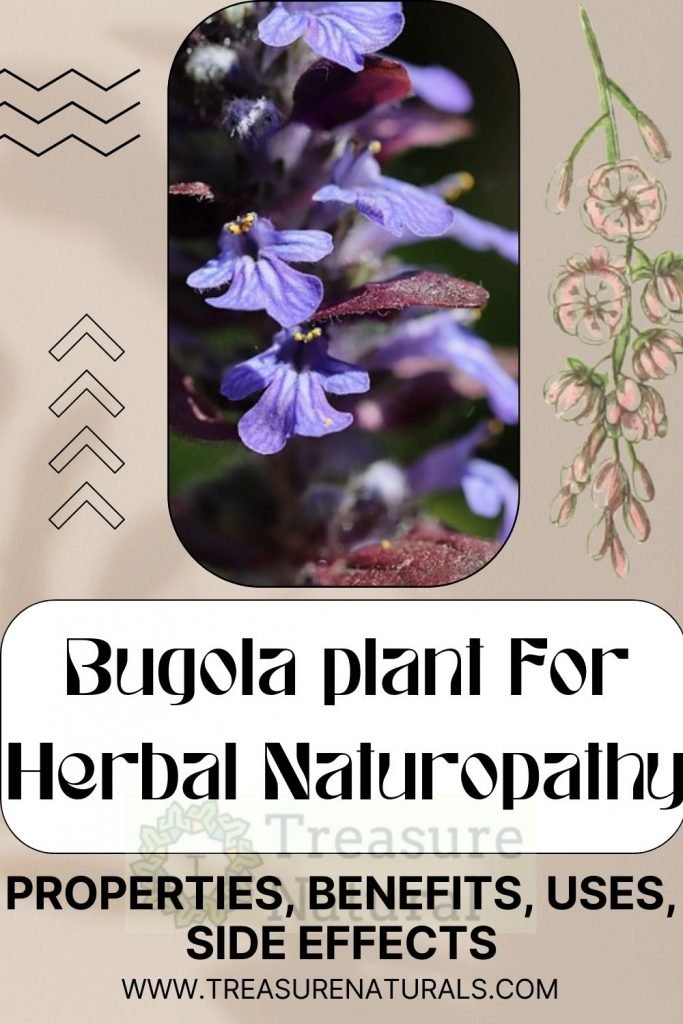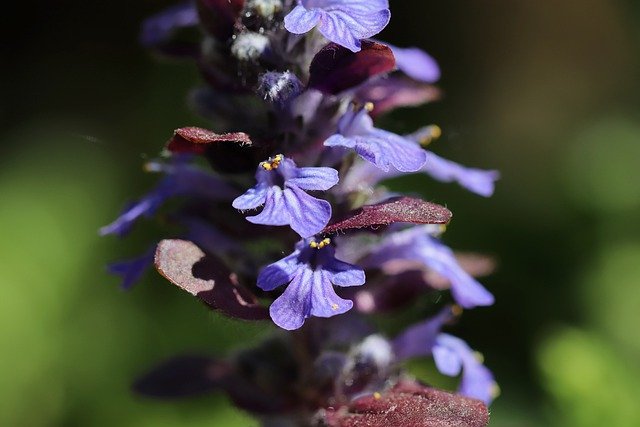
The bugola is a plant with anti-inflammatory and healing properties used in supplements against hair loss or androgenetic alopecia.
The bugola is a small spontaneous plant also known as morandola, dead grass, San Lorenzo grass or Lorenza grass, once used for its astringent and anti-inflammatory properties. Let’s find out together.
Properties of the bugola
The bugola is a small plant whose scientific name is Ajuga reptans. It is a perennial herbaceous with a creeping habit that belongs to the Lamiaceae family.
The leaves rich in tannins, saponins and essential oils were used of the bugola and to which astringent, anti-inflammatory, antiseptic and healing properties were attributed.
The bugola, however, also contains neo-clerodanic diterpenes with hepatotoxic action, so its use for internal use is now disconcerted.
However, there are commercially available supplements based on extracts of Ajuga reptans that contain compounds isolated from the plant, in particular lamiusolide A or teupolioside.
It is a molecule exploited for its anti-inflammatory and healing properties useful to promote wound healing and to protect against damage caused by UV rays. Teupolioside has also been shown to be potentially effective in the treatment of colitis and other inflammatory bowel diseases.
Often Ajuga reptans supplements are also recommended in case of benign prostatic hyperplasia, hair loss, androgenetic alopecia and acne for its ability to modulate the conversion of testosterone to dihydrotestosterone.
How to use
For external use of the bugola the leaves are used and in the form of an infusion to be used for skin wounds, hemorrhoids and to gargle and as a natural mouthwash in case of inflammation of the mouth, gums and throat.
The bugola is also used for cosmetic purposes, especially in the production of lotions and anti-hair loss products.
For internal use, bugola supplements are used to counteract androgenetic alopecia, acne and to prevent benign prostatic hyperplasia, a disease that causes enlarged prostate.
The young shoots of the bugola, harvested in the spring, are still used in cooking, to enrich salads, vegetable dishes and soups.
Contraindications of the bugola
The bugola contains compounds with hepatotoxic action, so it is a plant to be taken with great caution and under medical supervision.
Description of the plant
The bugola is a small herbaceous plant with a creeping habit, which does not exceed 20 centrimeters in height. The appearance of the plant is upholstery, with leaves that spread in a beam and form dark green carpets.
The plants are strongly aromatic and the stem has violet shades tending to purple. The leaves, spatulate and spoon-shaped, have a shiny, almost metallic appearance.
The calyx flowers develop in parallel forming spikes along the entire stem, they are of an intense blue that tends to violet and contain yellowish and protruding stamens.
Habitat of the bugola
The bugola is found in almost all of Europe, in the Caucasus, in Asia Minor. The typical habitat is fertile and fertilized meadows, it is also found along hedges and trail edges, but also in the woods.
The preferred substrate is calcareous but also siliceous with neutral pH, the soil must be medium moist.
A recipe with the bugola: the infusion

Infusion to the bugola: a teaspoon of flowers in a cup of boiling water; cover and strain after 5 minutes.
It can be used externally for skin diseases or lotions to counteract hair loss or, internally, after consulting your doctor.






